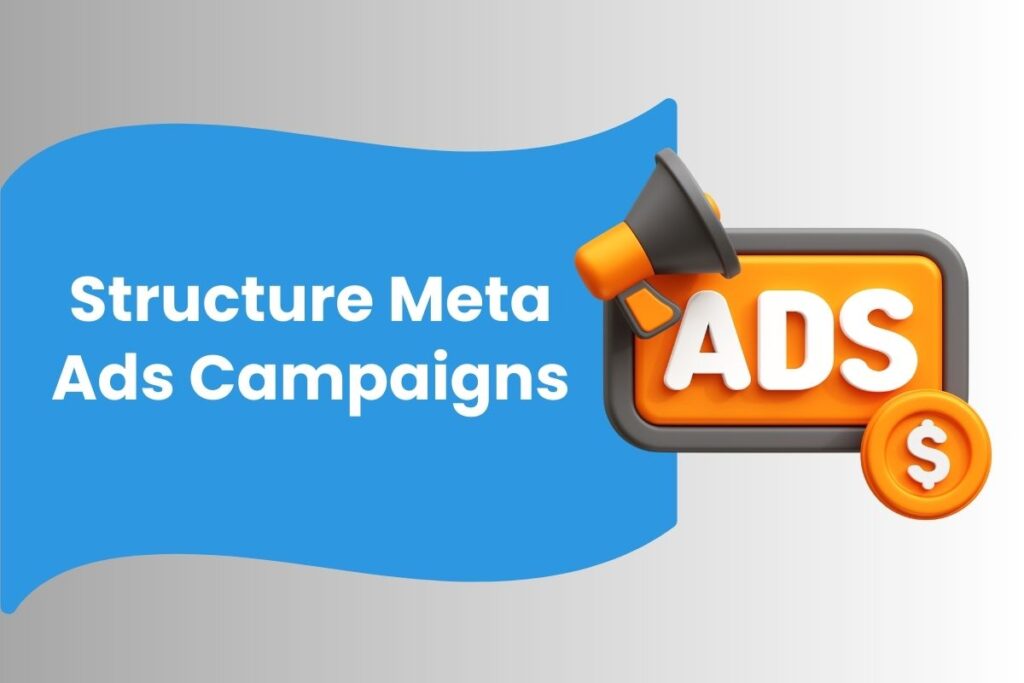
Last year, I consulted with two eCommerce founders—let’s call them Sarah and Mark.
Sarah had a thriving skincare brand but struggled with Meta Ads. She launched campaigns quickly, mixing multiple audiences, creatives, and budgets into one ad set. Her results? Sky-high CPMs, scattered data, and a return on ad spend (ROAS) below 1.
Mark, on the other hand, sold fitness equipment. He wasn’t spending more than Sarah—in fact, his budget was smaller. But his Meta Ads were structured with precision. Each campaign had one clear objective, neatly separated audiences, and multiple ad variations for testing. Within three months, his ROAS doubled, and he scaled his ad spend profitably.
The difference wasn’t luck—it was structure.
If you’ve ever wondered why some advertisers get incredible results on Meta Ads while others burn through budgets, the secret lies in how you structure your campaigns. In this guide, I’ll show you step by step how to build campaigns that maximize ROI.
Understanding Meta Ads Campaign Structure
Before diving into strategies, you need to understand the hierarchy of Meta Ads:
- Campaign – The highest level where you choose your objective (awareness, traffic, leads, conversions, sales).
- Ad Set – The middle layer where you define audiences, budgets, placements, and schedules.
- Ads – The creative level where your images, videos, and copy live.
Think of it like a tree: the campaign is the trunk, the ad sets are the branches, and the ads are the leaves. If the trunk isn’t solid, the whole tree falls apart.
Step 1: Define Your Campaign Objective
Every successful campaign starts with one question: What’s the goal?
Meta offers multiple objectives, but they boil down to three buckets:
- Awareness – Building brand recognition (best for new businesses or launches).
- Example: Running video ads to introduce your brand.
- Consideration – Driving engagement, traffic, or leads.
- Example: Sending users to a landing page or collecting emails.
- Conversion – Generating purchases or sign-ups.
- Example: Optimizing for “Purchase” events in your Pixel.
👉 If you’re trying to generate sales, don’t select “Traffic” as your objective—it’ll get you clicks, not conversions. Align your business goals with Meta’s objectives to avoid wasting spend.
Step 2: Audience Structuring
Once your objective is clear, it’s time to structure your audiences. This is where most advertisers go wrong by lumping everyone together.
Key audience types:
- Broad targeting – Letting Meta’s algorithm find buyers without restrictions. Works well with large budgets.
- Custom audiences – Based on your website visitors, email list, or app users. Great for retargeting.
- Lookalike audiences – Built from your best customers to find similar people.
👉 Rule of thumb: One audience per ad set.
This keeps your data clean, so you know exactly which audience is performing. Mixing 3–4 audiences in one ad set makes it impossible to tell which group is driving conversions.
Step 3: Ad Set Setup
The ad set is where the real strategy begins. Here’s what you need to consider:
1. Budget Allocation: CBO vs. ABO
- CBO (Campaign Budget Optimization): Budget is set at the campaign level, and Meta distributes it across ad sets. Great for scaling.
- ABO (Ad Set Budget Optimization): Budget is set per ad set, giving you more control. Best for testing.
👉 Start with ABO for testing, then switch to CBO for scaling.
2. Placement Strategy
- Automatic Placements: Recommended by Meta, allows ads to run across Facebook, Instagram, Messenger, and Audience Network.
- Manual Placements: Useful if you want to exclude certain placements (e.g., Audience Network for eCommerce).
👉 Unless you have data to suggest otherwise, stick with automatic placements to maximize reach.
3. Scheduling & Frequency
- Run ads continuously but monitor frequency.
- If people see your ad more than 3–4 times without converting, refresh your creative.
Step 4: Creative Structuring
Even the best targeting won’t work if your creative flops. In fact, creative is the #1 driver of CTR and ROAS.
Why variety matters:
Different people respond to different formats. That’s why you should always test:
- Video ads – Great for storytelling and product demos.
- Carousel ads – Perfect for showcasing multiple products.
- Static images – Simple and direct.
👉 Best practice: At least 3–5 ads per ad set, mixing formats and hooks.
And don’t forget to test ad copy as well—sometimes a new headline can boost CTR by 50%.
Step 5: Testing & Optimization Framework
Now comes the ongoing process of testing, measuring, and refining.
A/B Testing
- Test one variable at a time (creative, audience, or placement).
- Example: Same ad copy with different videos.
Key Metrics to Monitor
- CTR (Click-Through Rate): Measures engagement. Low CTR? Your creative isn’t stopping the scroll.
- CPM (Cost Per Mille): Tells you how much you pay for impressions. High CPM? Your audience may be too narrow.
- CPA (Cost Per Acquisition): The most important metric for profitability.
- ROAS (Return on Ad Spend): The ultimate measure of success.
When to Kill or Scale
- Kill an ad if it’s spent 2–3x your target CPA without conversions.
- Scale ads that consistently deliver conversions at or below your target CPA.
Step 6: Scaling the Campaign
Once you’ve found a winning setup, it’s time to scale. But do it strategically.
Horizontal Scaling
- Duplicate winning ad sets and test new audiences.
- Example: If your lookalike 1% is working, try 2% and 3%.
Vertical Scaling
- Gradually increase the budget (no more than 20–30% per day).
- Or switch to CBO and let Meta allocate budget to your top performers.
Scaling too fast can reset the learning phase, so go steady.
Pro Tips for Maximum ROI
To squeeze the most out of your Meta Ads:
- Leverage Conversions API – Helps Meta track data more accurately, even with iOS privacy changes.
- Use Rules & Automation – Set rules like “Pause ad if CPA > $50” to save time and money.
- Retargeting Strategies – Show ads to cart abandoners, past customers, or video viewers. Retargeting often brings the highest ROAS.
Conclusion
Remember Sarah and Mark? Sarah’s poorly structured campaigns drained her budget, while Mark’s organized setup drove growth.
The truth is, success on Meta Ads isn’t about luck—it’s about structure.
Here’s the recap:
- Define the right campaign objective.
- Segment audiences clearly.
- Set up ad sets with smart budgets and placements.
- Diversify creatives and test continuously.
- Optimize based on data, then scale carefully.
If you follow this framework, you’ll turn your campaigns into predictable, ROI-generating machines.
Now it’s your turn—open your Ads Manager, structure your campaigns with intention, and watch your ROI grow.
